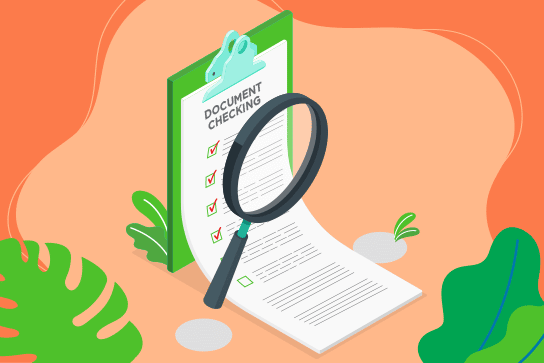LISTEN AUDIO
Last Updated on April 15, 2023 by Ozlinks Education
Subject: Produce desserts
This unit SITHPAT006* describes the performance outcomes, skills and knowledge required to produce hot, cold and frozen desserts following standard and special dietary recipes. It requires the ability to select, prepare and portion ingredients and to use equipment and a range of cookery methods to make and present desserts.
The unit applies to hospitality and catering organisations that produce and serve desserts, including hotels, restaurants, clubs and patisseries.
It applies to patissiers who usually work under the guidance of more senior chefs.
Elements and Performance Criteria.
Elements describe the essential outcomes. Performance criteria describe the performance needed to demonstrate achievement of the element.
1. Select ingredients.
1.1 Confirm food production requirements from food preparation list and standard recipes.
1.2 Calculate ingredient amounts according to requirements.
1.3 Identify and select ingredients from stores according to recipe, quality, freshness, and stock rotation requirements.
2. Select, prepare and use equipment.
2.1 Select type and size of equipment suitable to requirements.
2.2 Safely assemble and ensure cleanliness of equipment before use.
2.3 Use equipment safely and hygienically according to manufacturer instructions.
3.1 Sort and assemble ingredients according to food production sequencing.
3.2 Weigh and measure wet and dry ingredients according to the recipe and quantity of desserts required.
3.3 Minimise waste to maximise profitability of desserts produced.
3. Produce desserts and sauces.
3.1 Sort and assemble ingredients according to food production sequencing.
3.2 Weigh and measure wet and dry ingredients according to the recipe and quantity of cakes, pastries and breads required.
3.3 Prepare yeast-based dough to correct consistency and shape, according to standard recipes.
3.4 Minimise waste to maximise profitability of cakes, pastries and breads produced.
4. Cook cakes, pastries, breads.
4.1 Following standard recipes, produce desserts using cookery methods to achieve desired product characteristics.
4.2 Follow special dietary recipes to produce desserts for those with special dietary requirements.
4.3 Produce hot and cold sauces to desired consistency and flavour.
4.4 Use thickening agents suitable for sweet sauces.
4.5 Make food quality adjustments within scope of responsibility.
5. Portion, present and store desserts.
5.1 Portion desserts to maximise yield and profitability of food production.
5.2 Use accompaniments that balance and enhance taste and texture of desserts.
5.3 Select garnishes and decorations with flavours and textures that complement desserts.
5.4 Plate desserts, accompaniments and garnishes attractively, with artistic flair appropriate for the occasion and the item.
5.5 Plate and decorate desserts for practicality of service and customer consumption.
5.6 Visually evaluate desserts and adjust presentation before serving.
5.7 Display desserts with appropriate sauces and garnishes.
5.8 Store desserts in appropriate environmental conditions.
5.9 Clean work area, and dispose of or store surplus and re-usable by-products according to organisational procedures, environmental considerations, and cost-reduction initiatives.
Assessment Requirements.
Performance Evidence.
Evidence of the ability to complete tasks outlined in elements and performance criteria of this unit in the context of the job role, and:
- follow standard and special recipes to produce at least ten different desserts from the common desserts listed in the knowledge evidence
- ensure that at least two of the above desserts are produced to meet requirements of different special dietary requirements as listed in the knowledge evidence
- produce and use each of the following sauces at least once when preparing above range of desserts:
- chocolate based sauces
- custards and crèmes
- flavoured butters and creams
- fruit purées, sauces or coulis
- fruit syrups
- sabayon and zabaglione
- sugar syrups
- use each of the garnishes and decorations listed in the knowledge evidence at least once when preparing above desserts
- use appropriate cookery methods from the list in the knowledge evidence when producing the above desserts
- present desserts, accompaniments and garnishes attractively and decoratively
- prepare above desserts:
- that are consistent in quality, size, shape and appearance
- within commercial time constraints
- reflecting required quantities to be produced
- following procedures for portion control and food safety practices when handling and storing desserts
- responding to special customer requests and dietary requirements.
Knowledge Evidence.
Demonstrated knowledge required to complete the tasks outlined in elements and performance criteria of this unit:
- culinary terms and trade names for:
- variety of common desserts: bavarois, crème brulee, crème caramel, crêpes, custards and creams, flans, fritters, ice-cream, meringues, mousse, parfait, pies, prepared fruit, puddings, sabayon, sorbet, soufflé, tarts
- ingredients commonly used to produce desserts.
- substitute ingredients used to produce desserts for special dietary recipes: gluten free flour, yeast-free flour, non-sugar sweeteners.
- common special dietary requirements which must be considered when producing desserts:
- fat free
- low carbohydrate
- low fat
- low gluten
- gluten free
- low kilojoule
- low sugar
- sugar free
- type one and two diabetic
- vegan
- meaning of:
- food allergy
- food intolerance
- key health and legal consequences of failing to address special requirements.
- contents of stock date codes and rotation labels
- cookery methods used when preparing desserts:
- adding fats and liquids to dry ingredients
- baking
- chilling
- flambé
- freezing
- poaching
- reducing
- selecting and preparing appropriate dessert moulds
- steaming
- stewing
- stirring and aerating to achieve required consistency and texture
- using required amount of batter according to desired characteristics of finished products
- weighing or measuring and sifting dry ingredients
- whisking, folding, piping and spreading
- expected product characteristics of the classical and contemporary desserts specified in the performance evidence:
- appearance
- colour
- consistency
- moisture content
- shape
- size
- structure
- taste
- texture
- common garnishes and decorations used when preparing desserts:
- coloured and flavoured sugar
- fresh, preserved or crystallised fruits
- jellies
- shaved chocolate.
- sprinkled icing sugar.
- whole or crushed nuts.
- appropriate cooking temperatures and times for desserts.
- techniques to garnish, decorate, plate and present attractive desserts.
- indicators of freshness and quality of stocked ingredients for desserts.
- mise en place requirements for producing desserts.
- appropriate environmental conditions for storing desserts and re-usable by products of their preparation to:
- ensure food safety.
- optimise shelf life.
- safe operational practices using essential functions and features of equipment used to produce desserts.




